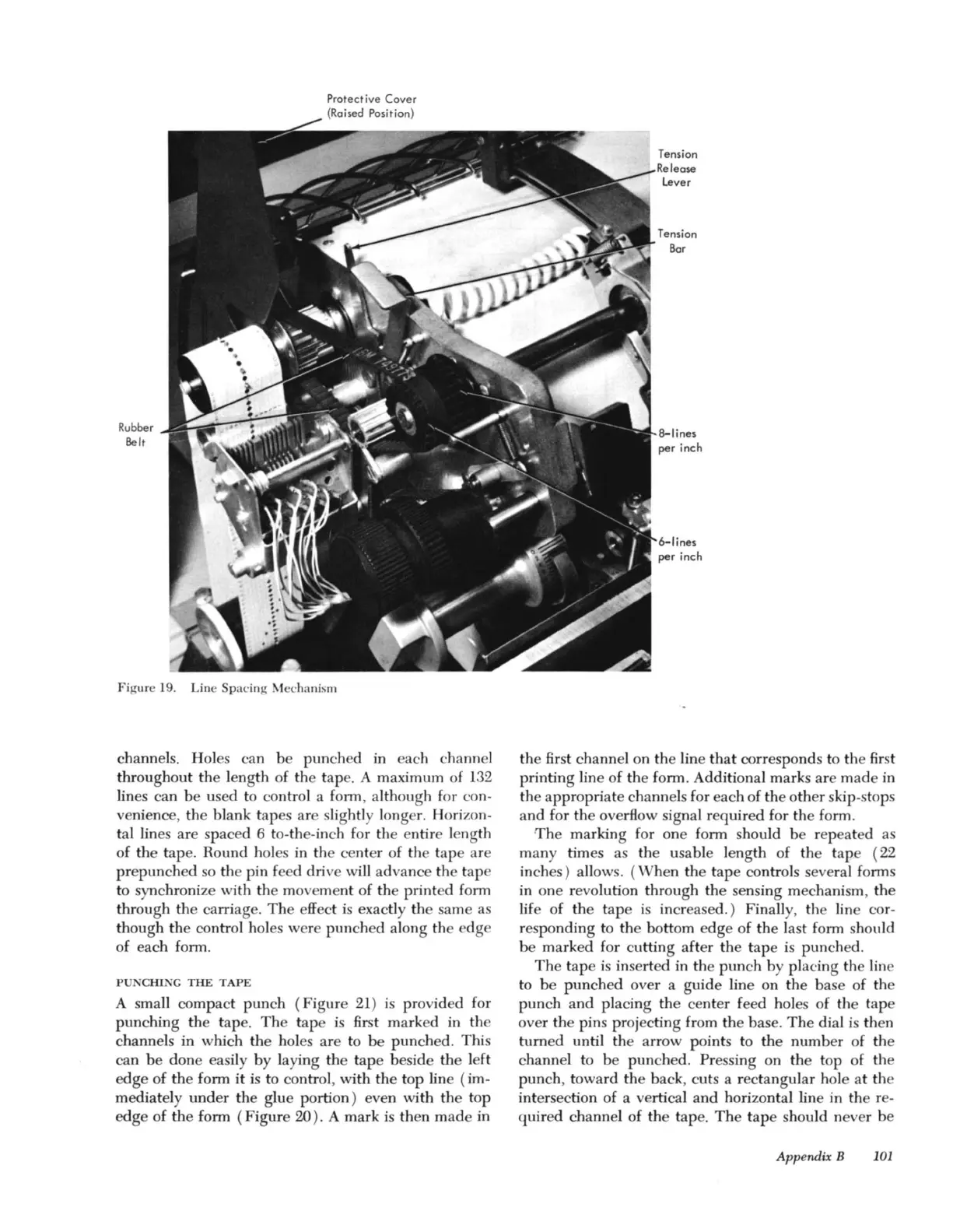Rubber
Belt
Pro
tec
tive
Cover
(R
oised P
osition)
Figur
e 19. Line Spacing Mechanism
channel
s.
Hol
es
can be punched in each cha
nn
el
throughout the length of the tape. A maxjmum of 132
lines can be used to
co
ntrol a fo
rm
, although for
co
n-
venience, the blank tap
es
are s
li
ghtly longer. Ho
ri
zon-
tal lin
es
are spaced 6 t
o-
the-
in
ch for the entire length
of the tape. Round hol
es
in
the center of the tape are
pr
epunched
so
the pin feed dri
ve
will advance the tape
to synchronize with the movement of the printed form
through the carriage. The
eHect is exactly the same as
though
th
e control hol
es
were punched along the edge
of each form .
PU
CH
IN
G
THE
TA
PE
A small compact punch
(F
igure
21
) js
pr
ovided for
punching the tap
e.
The tape is
fir
st marked
in
the
channe
ls
in wruch the hol
es
are to be punched. Thjs
can be done ea
sil
y by laying the tape beside the left
edge of
the
form it
is
to control, with
the
top line (
im
-
mediately under the glue portion) even with the top
edge of the form
(Figur
e
20
). A mark
is
then made in
the
first channel
on
the line
that
corresponds to the
fir
st
printing line of the form. Additional marks
ar
e made in
the appropriate channels for each of the other skip
-s
tops
and for the ove
rfl
ow Signal required for the fo
rm
.
Th
e marking for one form should be repeated as
many times as the usable length of the tape (
22
in
ches) a
ll
ows. (
Wh
en the tape controls several forms
in one r
ev
olution through the sensing mecha
ni
sm, the
life of the tape is increased.) Finally, the line cor-
r
es
ponding to the bottom edge of the last fo
rm
should
be marked for cutting after the tape is punched.
Th
e tape is in
se
rted
in
the punch by placing the
li
ne
to be punched over a guide line on the base of the
punch and placing the ce
nt
er feed holes of the tape
over the pins
pr
ojecting from the bas
e.
The
di
al
is
then
turned until the arrow points to the number of the
channel to be punched.
Pr
es
sing on the top of the
punch, toward the back, cuts a rectang
ul
ar hole at the
intersection of a vertical and horizontal line in the r
e-
qUired channel of the tap
e.
The tape should never be
Appe
ndi
x B
101
